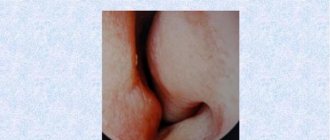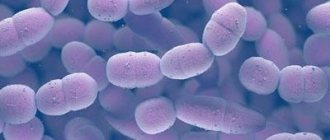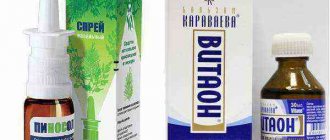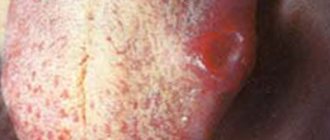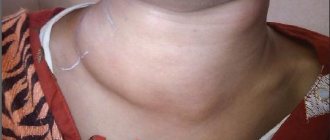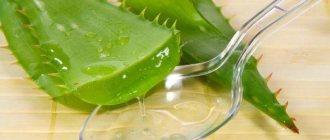Vasomotor rhinitis, neurovegetative form - what is it?
A runny nose or rhinitis (inflammation of the mucous membrane of the nasal cavity) is a common type of sinusitis. The disease affects all categories of citizens, regardless of gender and age. Neurovegetative rhinitis is one of the types of vasomotor type runny nose, which is characterized by the absence of external provoking factors. To put it simply, the disease does not belong to allergic or infectious types.
The neurovegetative etiology of the disease allows you to assign a code according to ICD 10 marked J32.0. The disease is chronic, and periods of exacerbation are not associated with changes in climatic conditions or a decrease in the patient’s immunity.
False runny nose belongs to the group of diseases of the ENT organs, but its distinctive feature is the absence of true inflammatory processes. Swelling of the mucous membrane is associated with disruption of the cavernous bodies, for example, with frequent and long-term therapy using local vasoconstrictor drops or sprays. Sick people note similar symptoms to allergic rhinitis, and often carry out improper self-medication, which aggravates the course of the pathological process. Many otolaryngologists are convinced that the main cause of neurovegetative vasomotor rhinitis is a disruption in the functioning of the central nervous system and the autonomic nervous system. In addition to these provoking factors, there are other reasons for the development of VNR.
Neurovegetative runny nose: what is it?
Depending on the origin, vasomotor disorders in the body that provoke a runny nose are divided into three types:
- Allergic.
- Neurovegetative.
- Hormone.
When neurovegetative vasomotor rhinitis occurs, vascular tone in the nasal cavity is disrupted, the sinuses swell and the nasal passages become blocked. These processes constantly change the location of the lesion - sometimes on the right, sometimes on the left side.
The form of rhinitis depends on the process:
- spicy;
- subacute;
- chronic.
This form of runny nose is not a disease, but one of the manifestations of vegetative-vascular dystonia or disorders of the nervous system of the body.
Causes of the disease
Impaired nasal breathing of the neurovegetative type is caused by a malfunction of the nervous system, in particular the hypothalamus.
The hypothalamus is part of the autonomic nervous system, which ensures the smooth functioning of peripheral systems. The organ provides the body with the necessary amount of hormones.
The center for regulating the formation of mucous secretion and blood supply to the nasal cavity is located in the middle segment of the hypothalamus, but under the influence of certain provoking factors, a nerve impulse is transmitted from the organ to the central nervous system. As a result, nasal breathing dysfunction is observed. Reasons leading to such a violation:
Neuroses: neurotic syndrome, VSD, NCD, depression are pathological conditions that affect the decrease in the level of nerve impulses. Often, reasons of this kind are due to genetic predisposition.- Anomalies in the structure of the nasal septum and sinuses, congenital or acquired.
- Autoimmune pathologies of the thyroid gland.
- Spending a long time in a dusty or smoky room. This category also includes professional activities: inhalation of vapors of chemical compounds, hazardous gases and fine dust (shards of glass, metal and wood shavings).
- Being in a state of prolonged stress against a background of emotional instability (may be associated with hormonal imbalance).
- Contact with pets with a history of an allergic reaction. This category is more of a provoking factor than the main cause.
- Chronic diseases of the ENT organs.
- Exposure of the patient to low temperatures, such as inhalation of frosty air.
- Decreased immunity due to a general viral infection or in the presence of immunodeficiency.
- The use of vasoconstrictor drops and sprays to treat swelling and runny nose.
How does the neurovegetative form of rhinitis manifest?
This disease is directly related to exposure to environmental factors.
Symptoms of neurovegetative rhinitis:
- regular liquid discharge from the nose, most often transparent;
- frequent sneezing;
- itching in the nasal cavity;
- Strong headache;
- possible pain in the nose;
- breathing problems;
- dizziness.
A person suffering from this disease becomes overly sensitive to moisture or cold air.
Sometimes the disease is accompanied by additional symptoms:
- High anxiety.
- Increased sweating.
- Blood pressure surges.
In the lying position, congestion increases significantly, swelling of the eyelids or even the entire face appears.
Body temperature may rise slightly and general weakness may occur. Neurovegetative rhinitis increases significantly at night, causing very unpleasant sensations to the patient. In addition to the above symptoms, a person becomes irritable and sleep may be disturbed because he cannot breathe normally.
Both forms of vegetative rhinitis are very similar to each other, so only a doctor determines the reasons that influenced the appearance and development of the disease, as well as the subsequent treatment plan. At first, the patient is recommended to do the following:
- avoid contact with sharp irritants;
- avoid sudden changes in temperature and humidity;
- if possible, eliminate stressful influences;
- have a full rest. Sneezing attacks most often become frequent in the morning. The patient does not always understand that this is a sign of rhinitis, and not a cold. With this disease, there is no visible acute inflammation of the nasal mucosa. At first, the victim may feel congestion on only one side, but over time the symptoms spread to the other half.
If you allow constant exposure to external irritating factors, this can lead to the formation of nasal polyps, which can only be removed through surgery.
Only a specialist should determine this disease.
Symptoms
The neurovegetative form of rhinitis has some similarities with the runny nose of another pathogenesis, but the disease is not characterized by an increase in body temperature. The clinical picture looks like this:
lack of nasal breathing, worsening when the patient lies horizontally;- copious mucous discharge;
- headache and migraine;
- sleep disturbance and insomnia are observed;
- dry superficial cough;
- decreased performance and memory impairment;
- mild signs of cerebral hypoxia;
- dyspnea;
- nervousness and irritability;
- burning and itching in the lower part of the nose;
- feeling of nasal congestion in the bridge of the nose;
- tearfulness (may be absent);
- fatigue and absent-mindedness.
In the absence of timely treatment, the symptoms become more intense, and nasal congestion causes secondary infections through the oral cavity.
A notable feature of neurovegetative rhinitis is temporary relief of breathing or a feeling of complete recovery without the use of medications. This condition lasts no more than 20 minutes and often occurs in the evening.
Associated bacterial or viral agents cause a number of complications affecting the ENT organs (ears, paranasal appendages and nasopharynx).
Symptoms of neurovegetative rhinitis and possible complications
The most important symptom of vasomotor rhinitis of the neurovegetative form is constant nasal congestion, which worsens in a lying position. This type of runny nose can disrupt the normal functioning of the nose.
Attacks of rhinorrhea are usually accompanied by frequent sneezing and occur suddenly several times a day. In most cases, congestion worsens at night, especially on the side on which the person sleeps.
Neurovegetative rhinitis is characterized by the following symptoms:
- numerous discharges;
- painful sensations inside the nose;
- itching in the nose;
- frequent sneezing;
- general weakness;
- increased body fatigue;
- eyelid redness and lacrimation;
- headache;
- cerebrovascular accident;
- worsening sleep;
- memory loss;
- lack of appetite;
- absent-mindedness and inattention;
- shortness of breath and heaviness in the lungs when breathing.
In the absence of timely treatment, the neurovegetative form of vasomotor rhinitis can provoke the development of many complications, for example:
- the formation of polyps inside the nose, which over time completely block the nasal passage;
- development of chronic sinusitis, causing swelling of the area around the eyes and pain in the frontal region;
- otitis (in the most severe forms it can develop into inflammation of the cerebral cortex);
- accumulation of pus in the maxillary sinuses, which leads to sinusitis.
Diagnostics
Diagnostic manipulations make it possible to establish a diagnosis and identify the stage of development of neurovegetative rhinitis.
To do this, doctors use rhinoscopy and sometimes endoscopy of the nasal cavity to get a general idea of the condition of the mucous membrane. The doctor interviews the patient, establishes anamnesis and correlates the patient’s complaints with the clinical picture. To confirm the diagnosis, it is often recommended to consult a neurologist, or less often an allergist, endocrinologist or immunologist.
Additional types of diagnostics include a general blood test, however, due to the absence of an infectious process, the clinical analysis picture is relatively calm.
What it is?
Neurovegetative rhinitis is a disease that, at first glance, resembles a chronic form of rhinitis, with characteristic symptoms.
The disease develops in a latent form; at the initial stage, the patient is only bothered by a slight runny nose, which appears in the morning and goes away after a short time. Again, symptoms appear only in the evening or are absent during the active period.
The following can provoke the appearance of unpleasant symptoms:
- Stressful situations , emotional shocks.
- Reboots of a physical nature.
- General weakening of the body caused by overwork.
A runny nose occurs spontaneously; there is no fever or other characteristic signs of a viral or cold disease.
The video shows general information about the disease:
Congestion can be caused by:
- traumatic injury to the respiratory system;
- foreign body in the sinuses;
- polyps or other glandular formations.
In this case, signs of the vasomotor form of rhinitis are present on an ongoing basis. They occur due to impaired blood flow to the mucous membranes. Timely removal of nasal polyps will help cope with the disease. There are also folk remedies for treating nasal polyps, but only a qualified specialist can prescribe them.
So, what is neurovegetative rhinitis? This is a neurological disease that has the main signs of an ENT disease. That is, against the background of impaired blood circulation and metabolic processes, characteristic swelling of the mucous membrane appears, not caused by an inflammatory process or contact with the mucous membrane of viruses and pathogenic bacteria.
Edema develops because the condition of the mucous membrane changes, problems arise with the flow of oxygen to the tissues and vascular tone decreases. A secretion that has a special, thick structure may accumulate in the sinuses; it will not be possible to get rid of this secretion naturally.
If the disease is not treated, then against the background of changes that occur, the mucous membrane becomes thinner, and polyps or other formations form in the nasal cavity. They can disrupt the breathing process and lead to respiratory failure.
What diseases cause neurovegetative rhinitis:
- Vegetovascular dystonia.
- Vasomotor dystonia.
- Endocrine diseases.
- Other neurological pathologies are associated with impaired blood flow to the brain.
The disease manifests itself against the background of hypotension, bradycardia and hypoxia (provided that oxygen starvation is not clearly expressed).
Treatment
Treatment for false rhinitis depends on how intense the clinical manifestations of the disease and the patient’s condition are. In mild cases of neurovegetative rhinitis, it is enough to eliminate the cause or minimize contact with cold air or gas vapor. The patient is advised to avoid stressful situations and normalize their lifestyle. In more severe cases, specialized treatment is carried out aimed at restoring the body's defenses, eliminating the cause of VNR and alleviating the signs of the disease.
Drug treatment
Part of complex therapy. The following groups of drugs are used:
rinsing the nasopharynx using antiseptic solutions;- sanitization of the nasal passages with salt components;
- vasoconstrictor local drugs prescribed by a doctor (used for no more than 5 days to eliminate swelling and mucus);
- sedative medications that normalize the activity of the cardiovascular system and eliminate neurotic syndromes;
- antihistamines, in particular based on corticosteroids (depending on the degree of the disease);
- anti-inflammatory drugs to strengthen the body's defenses and prevent re-infection;
- immunomodulators of general and local action.
Neurovegetative vasomotor rhinitis: treatment
Neurovegetative vasomotor rhinitis refers to chronic diseases of the nasal cavity.
Based on the name, the causes of the disease are disturbances in the nervous regulation of the mucous membrane. Manifested by deterioration of breathing and serous discharge from the nose. When examining the nasal turbinates, no characteristic inflammatory changes are observed.
The use of vasoconstrictor drugs cannot achieve a cure; it mainly requires an effect on the nervous system.
Neurovegetative vasomotor rhinitis
Classification
The adoption of a final classification of chronic rhinitis has not been fully completed. The diversity of etiology, pathogenesis and morphological changes complicate this task. Vasomotor rhinitis does not occur with signs of inflammation of the mucous membrane and is functional in nature. There are two forms of the disease:
- vasomotor neurovegetative rhinitis.
- Vasomotor allergic rhinitis.
IN AND. Voyachek identified these diseases in the group “false rhinitis”. They are not accompanied by destruction of cellular complexes of the mucous membrane or accumulation of purulent exudate.
The main influence on the development of vasomotor rhinitis of the neurovegetative form is a disorder of nervous regulation. At the same time, the vascular network of the mucous membrane expands and contributes to tissue swelling and deterioration of breathing.
Such patients often show signs of neurocirculatory dystonia, hypotension, and bradycardia.
Causes of neurovegetative rhinitis
Vasomotor rhinitis of the neurovegetative form manifests itself against the background of disorders of the nervous system. The center of nervous regulation of the vascular wall and nasal mucosa is located in the hypothalamus. Stress, overwork, and hypotension affect the hypothalamus, and in response, breathing becomes difficult. Reasons for the development of the neurovegetative form of rhinitis:
- functional disorders of the brain: neuroses, neurocirculatory dystonia, vegetative-vascular dystonia;
- thyroid diseases: hypothyroidism, autoimmune thyroiditis;
- taking vasoconstrictor drugs in drops: galazolin, otrivin, rhinonorm, etc.;
- constant contact with dust at work and at home;
- deviated nasal septum, polyps and turbinate ridges;
- constant exposure to cold air.
The main reason for the development of symptoms of the disease is considered to be the reaction of blood vessels to an irritant. They expand, thicken the wall of the mucous membrane, disrupting blood microcirculation. The cells react by actively secreting mucus, and the volume of the nasal turbinates decreases. This pattern is observed more often in one half of the nose and can easily move to the other side.
Symptoms of the neurovegetative form
The clinical picture of each form of vasomotor rhinitis is similar to each other. The neurovegetative form is manifested by profuse nasal discharge, sneezing attacks, difficult nasal breathing, a burning sensation and thinness.
A special feature is the periodic nature of the symptoms. They appear in the early morning after sleep, which indicates impaired functioning of the autonomic nervous system.
Prolonged exposure to cold, overwork, and emotional stress increase the manifestation of symptoms.
At first, patients complain of stuffiness in one half of the nose. At the same time, the other half maintains free breathing.
This condition can be replaced by complete recovery, but symptoms will appear with a change in the position of the head, with prolonged static stress.
These symptoms occur in people who suffer from neurocirculatory dystonia, hypotension, and neuroses. In this case, vasomotor rhinitis is treated by a neurologist.
vasomotor rhinitis - treatmentAllergic rhinitis (cold, vasomotor rhinitis)Vasomotor rhinitis - treatment of vasomotor rhinitis with a guaranteed effect
Seasonality is unusual for the neurovegetative form of rhinitis. Symptoms appear at any time of the year, unlike allergic rhinitis, where a runny nose and nasal congestion occur when plants bloom in spring or summer.
The continuous influence of pathological factors leads to the constant manifestation of symptoms and hypertrophy of the mucous membrane.
The result of this course is the formation of polyps in the nasal cavity, which requires surgical treatment.
Diagnosis of the disease
Complaints of nasal congestion and runny nose are very common in healthy people. These symptoms are only noticed when they seriously interfere with sleep and work. First of all, with such problems you need to contact an otolaryngologist. The doctor will do the following examinations:
- anterior rhinoscopy. With this method, the ENT doctor examines the nasal cavity on both sides and evaluates the anatomy. In the neurovegetative form, the vessels of the inferior turbinate dilate, the content of clear mucus increases, and swelling of the mucous membrane increases.
- Analysis of nasal mucus is performed by scraping with a cotton swab from the cavity of the nasal turbinates. The material is examined under a microscope. Neurovegetative rhinitis is supported by the normal ratio of neutrophils to eosinophils - 1:10, and the absence of mast cells.
- Rhinomanometry helps determine the volume of air during inhalation and exhalation using a special apparatus. The method is used before and after treatment. Swelling of the nasal mucosa can interfere with nasal breathing, while the volume of inhaled air is reduced to 40% of the healthy side.
- X-rays of the facial skull are performed to determine the curvature of the nasal septum, the accumulation of fluid in the paranasal sinuses, and suspicion of foreign objects.
- SCT of the facial skull is performed in exceptional cases. If nasal polyps, malignant tumors, or post-traumatic residual effects are suspected.
A general blood test and consultation with a neurologist can be added to the diagnostic measures. The test results sometimes show eosinophilia, characteristic of allergic rhinitis. Patients diagnosed with a neurovegetative form of rhinitis are examined by a neurologist. Since the manifestations of the disease are associated with lability of the nervous system, VSD or neurocirculatory dystonia.
Treatment
The main task of treating the neurovegetative form of vasomotor rhinitis is the elimination of provoking factors. They are often of a reflex nature and are associated with the nervous system.
Normalization of the working day, healthy and sound sleep, limiting stressful situations, morning exercises reduce fatigue and strengthen the tone of the autonomic nervous system.
This collectively affects the functioning of the brain, and as a result, regulates nasal breathing.
In case of an acute attack of vasomotor rhinitis and a sharp deterioration in nasal breathing, alpha-adrenergic agonists are used topically. These drugs sharply constrict blood vessels, reduce swelling of the mucous membrane and the release of mucous exudate.
Among them, the most effective are the sprays and drops Galazolin, Dlyanos, Otrivin, Nazivin, Lazolvan. In the acute phase, inject 2-3 drops into each nostril 3 times a day or 1-2 injections 3-4 times a day.
However, their long-term use contributes to addiction, decreased effectiveness, frequent nosebleeds and atrophy of the mucous membrane.
Antihistamines can eliminate swelling, reduce the permeability of the vascular wall and rhinorrhea, maintain vascular tone, and inhibit the release of inflammatory mediators.
Among the medications in this group, Erius, Telfast, and Trexil are widely used. Take 1 tablet 1 time in the morning. The course of treatment is up to 4 weeks with a mandatory break of 1-2 months.
These drugs do not have sedative properties and do not affect the reaction rate and heart function.
General restorative procedures are applicable for any neurovegetative disorders. Electrophoresis on the collar area, massage, contrast shower, hardening create a general strengthening effect.
At the same time, the vessels of the neck dilate, the blood supply to the brain and the conductivity of nerve impulses improve, and the function of cell membrane complexes is normalized. Low-frequency laser radiation is applied locally and the mucous membrane is exposed to a constant magnetic field.
Radiation from the outside is projected onto the base of the nose, and from the inside – onto the inferior nasal turbinates.
Surgical treatment should be used for polyps, ridges and spines of the nasal septum. These conditions contribute to disruption of the nervous regulation of blood vessels and mucinous cells. In these areas, swelling of the mucous membrane occurs, dilation of blood vessels and a decrease in the volume of inhaled air. Additional formations are burned out using laser radiation (laser) or a coagulator.
Complications of the disease
The neurovegetative form of vasomotor rhinitis with severe symptoms contributes to the formation of complications. Polyps often form in the nasal concha and septum. They block the nasal passage and sinus openings. Surgical treatment consists of removing the polyp.
Purulent sinusitis and sinusitis occur against the background of a long course of vasomotor rhinitis. Swelling of the mucous membrane leads to the accumulation of viscous exudate, which prevents its natural removal.
Bacterial flora joins and purulent contents form in the paranasal sinuses. Patients complain of headaches, elevated body temperature and purulent nasal discharge.
Treatment requires the use of antibiotics and rinsing the sinuses with antiseptics after puncture of the paranasal sinus.
Source: https://kakiebolezni.ru/otolaringologiya/rinit/nejrovegetativnyj-vazomotornyj-rinit.html
How to treat at home?
Treatment at home is aimed at eliminating provoking factors and initial signs of the disease. The following methods are used:
breathing exercises;- vitamin therapy;
- use of decoctions and infusions with a sedative effect;
- taking tinctures to strengthen the immune system;
- decoctions for rinsing the nasal cavity;
- creams and ointments based on medicinal herbs to soften and moisturize the epithelial layer.
Traditional methods are acceptable and effective; the only contraindication is the presence of an allergy to one or another component.
Possible complications
Complications develop extremely rarely and affect the ENT organs. Possible development:
sinusitis: sinusitis, ethmoiditis, frontal sinusitis;- inflammation of the middle ear - otitis media;
- formation of polyps or cysts in the nasal passages;
- pharyngitis, tonsillitis;
- viral infections (secondary infection).
Systemic pathologies, as well as diseases of the lower respiratory organs, cannot be excluded. Since the reasons lie in the nervous system, the possibility of worsening depression and stress cannot be ruled out.
